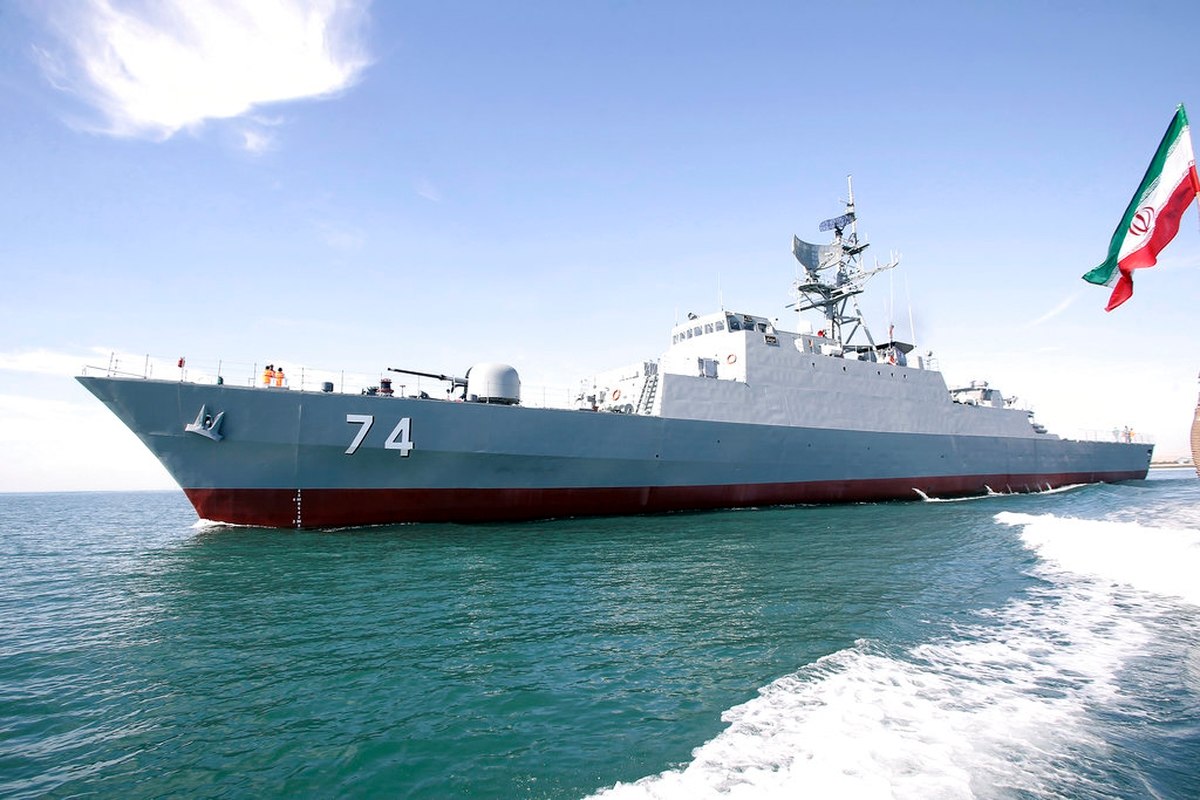In late 2018, Iran deployed its newest indigenous stealth destroyer to the Persian Gulf to add to its antagonism of the US Navy.
The Sahand destroyer is the first in a new family of Iranian warships, and it was “the result of daring and creative design relying on the local technical knowledge of the Iranian Navy… and has been built with stealth capabilities,” Iranian navy shipyard chief Rear-Admiral Alireza Sheikhi told state TV.
The Sahand has a flight deck for helicopters, torpedo launchers, anti-aircraft and anti-ship guns, surface-to-surface and surface-to-air missiles and electronic warfare capabilities.
Separately Reuters reported that a naval commander said Sahand may be among warships that Iran plans to send on a mission to Venezuela soon.
“Among our plans in the near future is to send two or three vessels with special helicopters to Venezuela in South America on a mission that could last five months,” Iran’s deputy navy commander, Rear-Admiral Touraj Hassani Moqaddam
The new destroyer is one of a series of challenges specifically aimed at the US and its Navy.
In November 2018, Iranian Supreme Leader Ayatollah Ali Khamenei said Iran should increase its military capability and readiness to ward off enemies, in a meeting with Iranian navy commanders.
On November 29th, Iran’s navy announced the acquisition of two mini-submarines designed for operation in shallow waters such as the Persian Gulf, including one new sub and an overhauled one.
In October 2018, Iran extended the reach of its land-to-sea ballistic missiles up to 700 km, or 435 miles, capable of hitting “any vessel or ship” at that range.
This poses a threat to the US 5th fleet which routinely operates in the Persian Gulf.
“We remain committed to providing and promoting security and stability in the region and continue to stand with our partners to sustain freedom of navigation and free flow of commerce in international waterways,” U.S Naval Forces Central Command Cmdr. Joshua Frey told Task & Purpose in a statement. “We advocate for all forces to conform to international customs, standards and laws.”
The US Navy ships are also defended, an August 2018 Congressional Research Service report noted that vessels outfitted with interceptors under the Aegis ballistic missile defense program are explicitly postured to defend against Iranian attacks, regardless of their actual area of operations.
“Under the European Phased Adaptive Approach (EPAA) for European BMD operations, BMD capable Aegis ships are operating in European waters to defend Europe from potential ballistic missile attacks from countries such as Iran,” the CRS report said. “BMD-capable Aegis ships also operate in the Western Pacific and the Persian Gulf to provide regional defense against potential ballistic missile attacks from countries such as North Korea and Iran.”
Iran has also threatened to repeatedly close the Strait of Hormuz in response to continuing US sanctions on its economy and on its oil exports in particular. With the recent sanctions, Iranian tankers are also still transporting crude oil and are being hunted by the US, Iran has threatened that if any of its vessels are captured it could potentially respond by closing the Strait.
There was a somewhat of a calm in Iran’s continued harassment of US Navy ships in 2018.
Especially tense moments include an incident from September 2016, when seven Iranian Revolutionary Guard Corps Navy ships approached a single U.S. coastal patrol ship.
In August 2016, small Iranian boats repeatedly approached U.S. ships, resulting in warning shots fired by the U.S. Navy.
US military officials said that more than 30 such incidents took place in 2016 and 2017, but after Trump’s inauguration they sharply went down in number.
Iranian Harassment of U.S. Warships:
2015: 22
2016: 36
2017: 14
2018: 0Source: @USNavy
— Donald J. Trump (@realDonaldTrump) July 8, 2018
“I hope it’s because we have messaged our readiness…and that it isn’t tolerable or how professional militaries operate,” said Army Gen. Joseph Votel, commander of U.S. Central Command, the WSJ reported.
Iran continues to harass U.S. sailors with the use of drones, otherwise referred to as unmanned aerial vehicles.
“Even with the decreased incidents, we remain concerned with the increased number of Iranian UAVs operating in international airspace at night without navigation lights or an active transponder as would be expected according to international norms,” Cmdr. Bill Urban, spokesman for the U.S. Navy’s Fifth Fleet, told the WSJ. “We continue to advocate for all maritime forces to conform to international maritime customs, standards and laws,” he said.
Most recently, in October 2018, Iranian Navy fast boats came close to the USS Essex and at least one of the other ships in the Essex Amphibious Ready Group in the Persian Gulf while a top U.S. general was aboard.
The armed Iranian Revolutionary Guard Corps Navy FIACs (fast inshore attack craft) approached both the USS Rushmore and the Essex, coming within about 300 yards of the Essex at one point.
The captain of the Essex described the interactions as “safe and professional,” but said they were “annoying.”
The Iranian vessels asked for identification from the warships.
It is uncertain why the incidence of such events has seen a downturn by the Iranian Navy, it could be that it doesn’t deem it necessary to do so any longer. This could potentially signal that it is also confident enough that if the need arises it can close the Strait of Hormuz and choke the transit route of 30% of the world’s crude oil exports.






